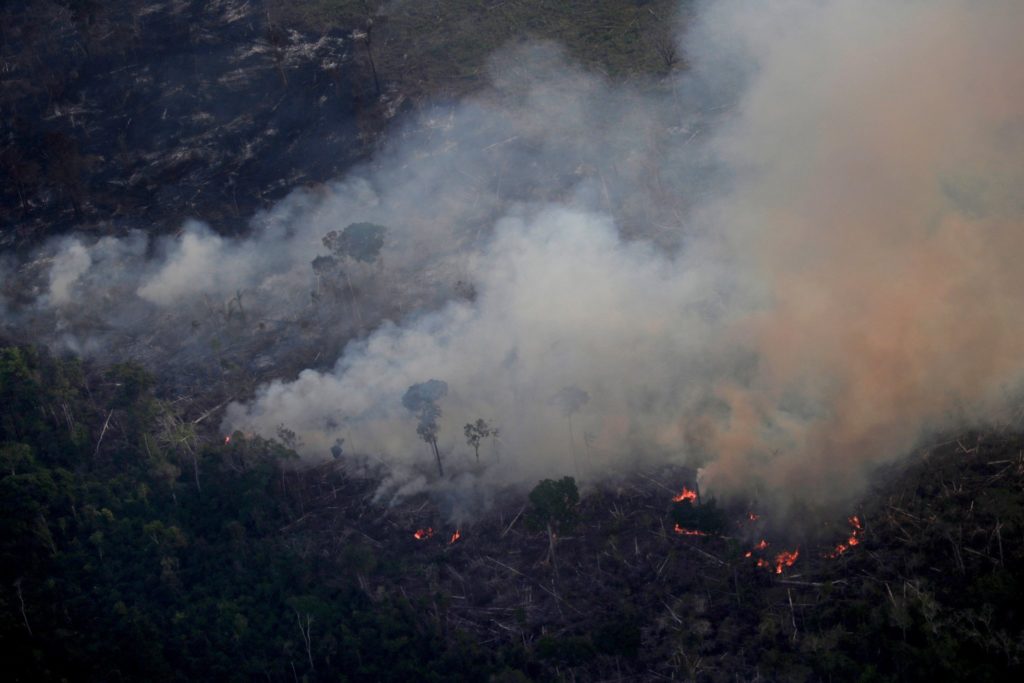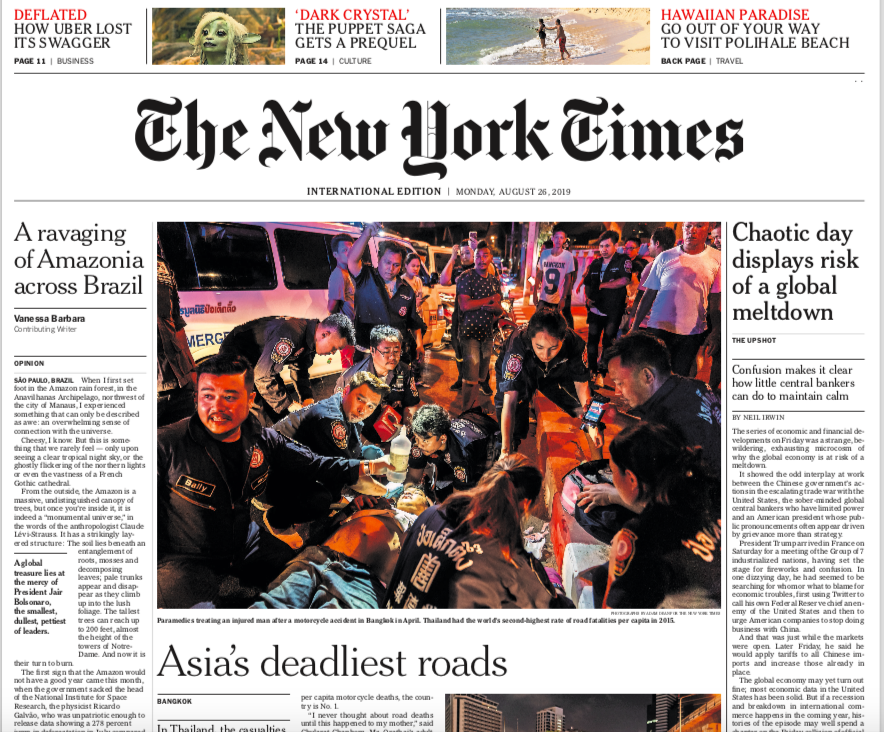
A global treasure lies at the mercy of the smallest, dullest, pettiest of men.
The New York Times
Aug. 24, 2019
By Vanessa Barbara
Contributing Opinion Op-ed Writer
SÃO PAULO, Brazil — When I first set foot in the Amazon rain forest, in the Anavilhanas Archipelago, northwest of the city of Manaus, I experienced something that can only be described as awe: an overwhelming sense of connection with the universe. Cheesy, I know. But this is something that we rarely feel — only upon seeing a clear tropical night sky, or the ghostly flickering of the northern lights or even the vastness of a French Gothic cathedral.
From the outside, the Amazon is a massive, undistinguished canopy of trees, but once you’re inside it, it is indeed a “monumental universe,” in the words of the anthropologist Claude Lévi-Strauss. It has a strikingly layered structure: The soil lies beneath an entanglement of roots, mosses and decomposing leaves; pale trunks appear and disappear as they climb up into the lush foliage. The tallest trees can reach up to 200 feet, almost the height of the towers of Notre-Dame. And now it is their turn to burn.
The first sign that the Amazon would not have a good year came this month, when the government sacked the head of the National Institute for Space Research, the physicist Ricardo Galvão, who was unpatriotic enough to release data showing a 278 percent jump in deforestation in July compared with the same month the previous year. President Jair Bolsonaro said that he should have been warned about such evidence, which could cause the country great harm internationally. “This is not a posture from a Brazilian, someone who wants to serve his country and is concerned about Brazil’s businesses,” Mr. Bolsonaro said. He suggested that the agency could be lying to make the government look bad.
By then, however, a number of satellite images had emerged showing truly alarming numbers of fires across the Amazon: dozens of smoldering patches of scorched earth, clouding the dark green landscape. Soon they were followed by a more concrete image of a local firefighter offering water to a thirsty armadillo, prompting outrage across the globe. (Later, in an interview, the firefighter explained that the photo had not been taken in the Amazon, but rather in a nearby grassland region.)
According to the institute, the number of fires detected in Brazil so far this year is 84 percent higher than in the comparable period last year; more than half of those are in the Amazon region. More than 1,300 new fires were added over the course of just two days this week. Satellites have captured images of the smoke from the flames sweeping across several Brazilian states. In São Paulo, where I live, dark clouds blackened the sun on Monday, turning day into night. The city is thousands of miles away from the Amazon. Meteorologists scrambled to explain what had happened, but many suspect that the culprit was low-lying clouds from a cold front combining with smoke.
On Twitter, the environment minister, Ricardo Salles, attributed the surge in fires to dry weather, wind and heat. But scientists and environmental organizations disagree. According to a recent statement by researchers from the Federal University of Acre and the Amazon Environmental Research Institute, the fires are directly related to deforestation. They were probably set by cattle ranchers, farmers and loggers to clear the land: First they cut the trees; then they wait for the dry season; then they wait until it’s clear they have a president who will do nothing to stop them; then they set it all ablaze.
On Aug. 10, farmers from the northern state of Pará organized a coordinated “fire day” to burn land for agriculture, emboldened by Mr. Bolsonaro’s anti-environmental rhetoric and encouraged by the government’s commitment to weakening the agencies that enforce environmental regulations.
Mr. Bolsonaro, who once threatened to leave the Paris climate accord, is famously dismissive of any environmental concerns — he claims Brazil suffers from an “environmental psychosis” — which, in his opinion, only hinder economic development. In July, he said that environmental issues mattered only to “vegans, who eat only vegetables.” He also declared Brazil and its resources a“virgin” that “every pervert outsider wants.” When asked about the fires, the president suggested, with no evidence, that nongovernmental organizations could have started them to generate negative attention toward his government.
It’s been heartbreaking to watch the country burn, both literally and figuratively, under Mr. Bolsonaro. Right now, Brazilians feel a collective, perplexed grief for everything we stand to lose — not only as Brazilian citizens, but as humans. The Amazon is often described as the Earth’s “lungs,” producing 20 percent of our atmosphere’s oxygen. It also stores carbon dioxide, a major cause of global warming.
And yet, what hurts me most is the bare idea of the millions of Notre-Dames, high cathedrals of terrestrial biodiversity, burning to the ground; all those layers of 100-year-old chestnut trees, vines, rubber trees, palm trees, banana plants, orchids, bromeliads, passion fruit flowers; the macaws, toucans, capybaras, sloths, jaguars, anacondas and ants that called them home. A monumental universe, turning, as I write this, into pasture and soy.
Vanessa Barbara is the editor of the literary website A Hortaliça, the author of two novels and two nonfiction books in Portuguese, and a contributing opinion writer. A version of this article appears in print on Aug. 25, 2019, Section SR, Page 2 of the New York edition with the headline: As the Amazon Burns.


